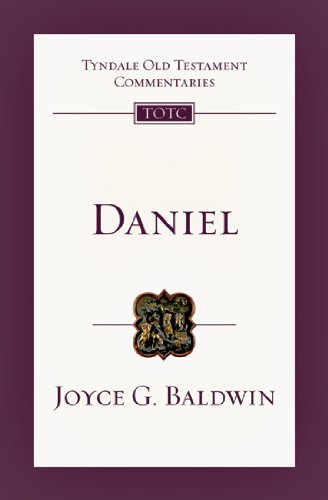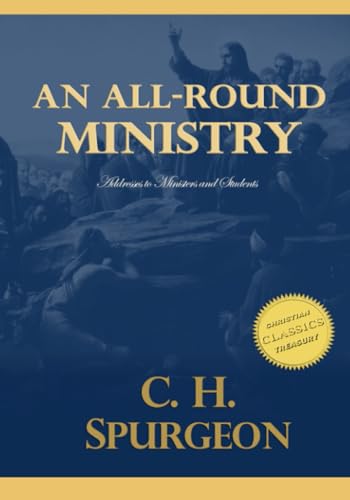The Holy Bible: New International Version (NIV)
Written by Hodder and Stoughton Reviewed By M. E. J. RichardsonThis British edition of a Bible which received copyright in the USA in 1978 has been welcomed by evangelical spokesmen. The publishers quote the praise of F. F. Bruce as well as that of John Stott and Billy Graham. When the NIV New Testament appeared in 1973, it was enthusiastically reviewed in this journal (ThemeliosNew Series, I/1 (Autumn 1975) pp. 24f.). The following remarks will be limited to the Old Testament, parts of which appeared before this edition (Isaiah, 1975; Daniel, 1976; Proverbs and Ecclesiastes, 1977).
The sponsors have tried to ‘safeguard the translation from Sectarian bias’ by selecting translators on a ‘trans-denominational’ basis. However, they clearly wished it to have a distinctively evangelical bias since their translators all believe ‘the Bible alone, in its entirety, is the Word of God’. Therefore it is no surprise to find that ‘almâ in Is. 7:14 is translated ‘virgin’ without any note to say that this word can also mean any girl of marriageable age (cf, RSV: ‘young woman’, note: ‘or virgin’). In another famous verb Job knows that his ‘Redeemer lives’ (Job 19:25, note: ‘defender’) rather than his ‘vindicator’ (NEB; RSV margin) or ‘someone in heaven’ (GNB); but obscurely we hear that He will, perhaps, at the end stand ‘upon my grave’ rather than ‘upon the earth’ (see margin). Traditional expressions from the OT, well known in evangelical meetings, are preserved so that the ‘rose of Sharon’ (Song 2:1) is reinstated after becoming an exotic asphodel (NEB) and a much less distinctive ‘wild flower’ (GNB) and the famous ‘balm of Gilead’ (Jer. 8:22) is not dispensed clinically as ‘medicine’ (GNB). Moses still crosses the Red Sea (Ex. 13:18)—the Sea of Reeds is marginal—and “In the beginning God created …’ (cf. ‘began to create’, RSV, margin or ‘made’, NEB) ‘… the heavens and the earth’ (cf. ‘universe’, GNB).
This is not to say that the NIV has ignored modern interpretations of Hebrew words; ‘leprosy’ is recognized as too narrow a term for ṣārā‘aṯ and is translated ‘infectious skin disease’ (Lev. 13:2) or ‘leprous diseases’ (Dt. 24:8). Similarly ṣalamāweṯ is translated ‘deep shadow’ in preference to the traditional ‘shadow of death’ (Job 3:5). But where these words occur in better known passages, the more traditional translation is given. Naaman still has ‘leprosy’ (2 Kings 5) and so does Uzziah (2 Chron. 26:19); the most celebrated ‘valley of the shadow of death’ (Ps. 23:4) has not been renamed. Such inconsistencies should have been avoided; they cannot be excused either in the name of scholarship or evangelical doctrine.
Furthermore, some well-known verses are changed, but not always for the better. We are now encouraged to sing of the ‘love’ rather than the ‘mercies’ of the Lord for ever (Ps. 89:1); other translators have preferred a stronger term for heseḏ here (RSV: ‘steadfast love’ NEB: ‘strong love’; GNB: ‘constant love’) and the use of the unqualified term means that it is not distinguished from the love ’ahaḇâ) of the ‘Lover’ who took his ‘Beloved’ to the ‘banquet hall’ (Song 2:4)—mercifully, he did not take her to the NEB ‘wine garden’. We are informed that the Suffering Servant was not ‘bruised’ but ‘crushed’ for our iniquities. This new translation has obviously been approved because it is the literal equivalent of the Hebrew verb dāḵa’. But this is just the kind of sentence where a literal translation should have been avoided because it is misleading. In English ‘to crush someone’ usually has a figurative meaning and implies that the person crushed had a tendency to dominate. Clearly this is not the situation here and ‘It pleased the Lord to crush him’ (Is. 53:10) could easily be misunderstood, suggesting the punishment was deserved. It is clear that the traditional ‘bruise’ is an inaccurate translation and has to be changed, and so here the best solution is to use a term of wider significance (like NEB ‘tortured’) which still has an abhorrent connotation.
The main aim of the NIV translators seems to have been to provide a modernized and specifically evangelical substitute for the RSV; they have evidently decided to deny themselves the freedom the NEB and GNB translators allowed themselves in order to achieve a more idiomatic level of English. It cannot be denied that the RSV is archaic for the readers of to-day. It still uses ‘thou’, ‘come to pass’, introductory ‘and’ and the usual bunch of Hebraized English expressions familiar to AV readers, and generally speaking the NIV has made improvements at this level. It has also decided to suppress the frequent explicit marginal references in the RSV to a textual correction, for these references have disturbed fundamentalists, especially in America. The NEB preferred ‘prob. rdg.’ for RSV ‘Cn.’ and GNB used ‘Probable text’ but NIV avoids any such expression and is content simply to quote in the margin the translation of any Hebrew it finds unacceptable or to describe the Hebrew as ‘obscure’. This is understandable so far. But it is disturbing to discover that there are occasions where the text seems to have been emended without even a note to that effect. In Ps. 68:23, for example, the translation ‘plunge your feet into the blood of your foes’ presumably implies that timḥaṣ lit. ‘you strike’, was read as yirḥaṣ (cf. Ps. 58:10). This is a perfectly reasonable conjectural emendation and a widely accepted one, but it should have been annotated as such. Not to do so, to say the least, is careless.
As far as presentation is concerned it was an excellent idea to include a conversion table of weights and measures at the end and it would have been good to expand this section to include some common geographical terms and other items of interest. The conversion table means that the imperial and metric annotations of Hebrew terms in the text are superfluous, and had it been expanded other repetitive notes like those on Cush (‘the Upper Nile area’) or sapphire (‘lapis lazuli’) could have been amplified. What did seem clumsy was the decision to use the chapter rather than the page as the unit for a set of notes; it is not good to have more than one note with the same siglum on one page.
These critical observations are not intended to overshadow the overall high standard of this translation (everyone knows that the translators have undertaken a task full of insoluble linguistic difficulties complicated by theological pressures), but they do provoke questions which any evangelical must face when attempting to translate the Bible. Perhaps the most obvious one is whether or not to regard the Masoretic text as the primary authority, and if so, how to decide when to depart from it. A cursory glance through the notes will show that the NIV has often preferred a Septuagint or Scrolls reading in preference to the MT. In the acrostic Psalm 145, for example, MT curiously has no verse beginning with nûn. NEB, perhaps surprisingly, follows the MT exactly and makes no reference to the omission, but NIV, following RSV., includes a verse 13b in the text and refers to the substantial non-Masoretic support for this addition (Scrolls, Septuagint, Peshitta). There does happen to be one isolated Masoretic manuscript also containing the verse but if the main Masoretic tradition is to be followed as the primary authoritative text, this verse should properly have been omitted from the main translation, although probably added as a marginal addition. If the MT is not to be followed when other versions or conjectural emendations seem preferable, some principles need to be formulated about what is and what is not compatible with evangelical belief.
Then there is the question of the level of English to be used in translating the Bible. Traditionally, evangelicals have preferred a more literal translation than the modern idiomatic style of some recent translations. Such literalism is clearly helpful in that it preserves the style of the original and seems better suited to textual study. The evangelical who is concerned to study his Bible may therefore have to use a different text from the one used for preaching to the unconverted. Semitisms such as the juxtaposition of prepositions (the Lord proclaimed the Ten Commandments ‘from out of the fire’, Dt. 5:22), inelegant tautologies (Mordecai authorized the Jews ‘to destroy, kill and annihilate’, Est. 8:11) and quaint archaisms (Jonah is swallowed by a ‘great fish’, Jon. 1:17) may well prevent this translation from commanding the attention of people who have not been trained to familiarize themselves with King James’ English.
Finally it is questionable whether the concept of an evangelical translation of the Bible is a helpful one. Surely the emphasis of evangelical belief in the Bible is to accept as supremely authoritative what others regard as primarily informative. Usually the Christian evangelist has been able to point to a Bible which was accepted by churchmen of all heights and it would not be good for evangelical belief to be derived from a special evangelical Bible. It is already confusing for the would-be disciple to choose the right translation to read and for the Christian who is not a linguist the right one to study. If we accept the principle of a distinctively evangelical translation, there will be a danger that before long we shall not be concerned about whether or not our neighbour is reading his or her Bible, but whether or not he or she is reading ours.
M. E. J. Richardson
University of Manchester






